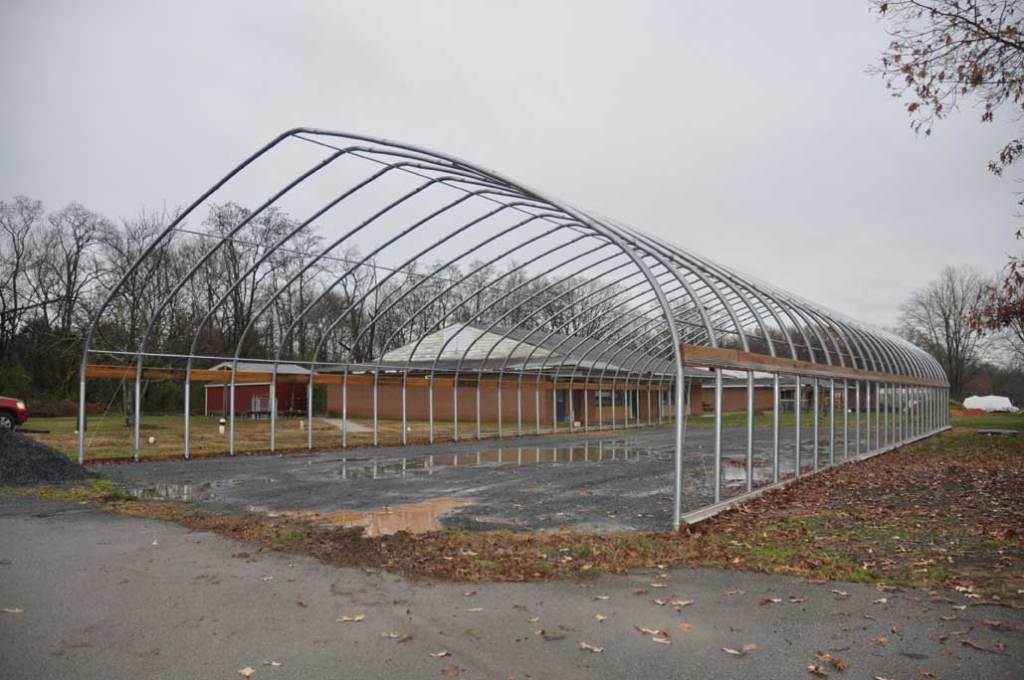Greenhouses to enhance horticulture instruction
Published 4:26 pm Thursday, December 3, 2015

- ITALIA GREGORY | HERALD Construction has begun on a new greenhouse to aid the students of Cumberland High’s Growing Education for Sustainability Program.
Cumberland County High School students will learn horticulture and customer-service skills with two greenhouses under construction.
Agriculture teacher Lindsay Talbott said one of the greenhouses will be used to grow vegetable and bedding plants to sell to the public. This will give students the opportunity to learn basic greenhouse skills in a real-world environment, as well as business skills.
“We will also have hanging baskets and seasonal flowers,” Talbott said. “Aside from all of the this, we will be doing an aquaculture (growing plants in water) area, hopefully partnering with Virginia State University for setup and the inaugural period. More information on that will be provided as construction is completed.”
Trending
According to Talbott, the agriculture program’s greenhouse will measure 42 feet by 96 feet.
Cumberland High Assistant Principal Cora Tolliver said the horticulture program is new to the school district this year and the agriculture program was re-established last year. However, the agriculture program has primarily placed an emphasis on small animal care and equine management. In addition, a model farm was recently created.
“This was done with the help of our Agriculture Program Advisory Committee, consisting of approximately 15 local farmers and community members who serve as our consultants. They also loan us animals, when needed, to expose our students to a greater variety and never hesitate to lend a helping hand,” Tolliver said.
Angela Whittaker, green building design instructor at Cumberland, plans to utilize the second greenhouse for her program.
“The new removable-film-covered greenhouse will be part of the Growing Education for Sustainability Program at Cumberland County Public Schools,” Whittaker said. “The program currently grows winter lettuces and greens for the MS/HS cafeteria and plans to expand its food-to-school program by using the greenhouse to grow more biologically managed crops and produce.”
Whittaker said that when the new greenhouse is complete, students will be able to apply the knowledge they learn in the classroom by designing, building and maintaining in-ground and above-ground growing areas.
Trending
“The plan is to produce enough produce to reduce the cafeteria food bill so they can hire a dishwasher and eliminate the use of Styrofoam and plastic utensils. Students have spent three years determining the best varieties for our soil and are ready to grow in a climate-controlled area with a full school year growing season,” said Whittaker.
Projected costs and a timeline for the greenhouses’ completion were not available.





